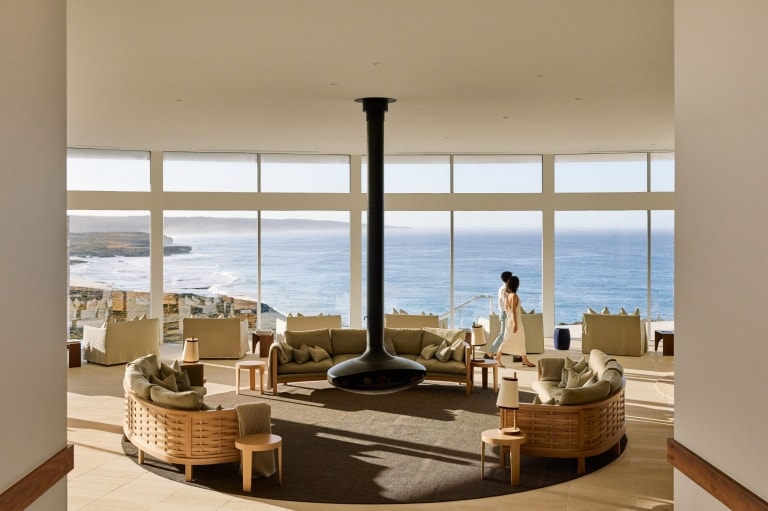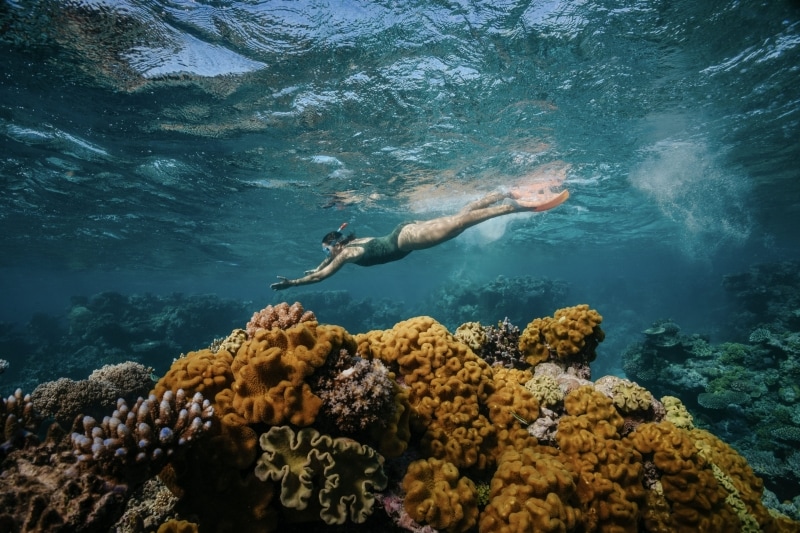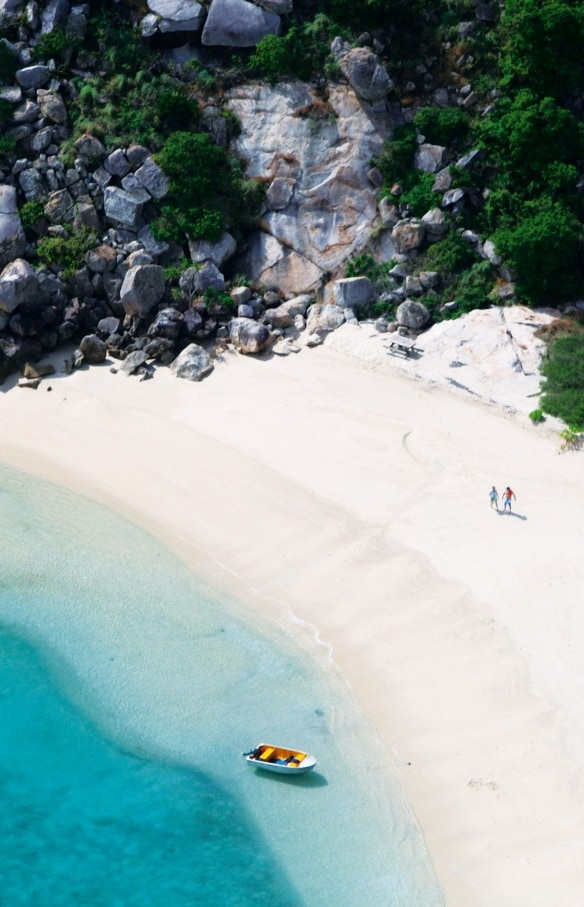
Southern Ocean Lodge, Kangaroo Island, South Australia © South Australian Tourism Commission
Australia’s most unmissable sustainable stays
From outback to city and mountain to coast, Australia offers some of the world’s most extraordinary sustainable accommodation choices.
Kittawa Lodge
Kittawa Lodge
Nestled amid the grassy sandhills of King Island in Tasmania awaits the off-grid luxury and sweeping coastal views of Kittawa Lodge. With solar-powered electricity, on-site water catchment and sophisticated waste management, each one-bedroom lodge has been mindfully created to preserve the island’s natural beauty. Feel at one with nature with floor-to-ceiling windows, the sound of the powerful ocean and curious wildlife that may waddle by.
Blackbird
Blackbird
At Blackbird, you’ll find solitude amid only three guest pavilions in the lush hills of the Byron Bay hinterland, about two hours south of Brisbane. Each pavilion is serviced by rainwater and solar power, boasting sweeping views over the rainforest. The communal area, built largely from repurposed materials, overlooks a magnesium salt pool. Spend your days exploring the rainforest and waterfalls, calling in on cafés and markets in the nearby town of Mullumbimby.
Capella Lodge
Capella Lodge
Lord Howe Island is World Heritage-listed for its pristine environment. Resting above a beach at the foot of Mount Gower, Capella Lodge is a luxury lodge designed to conserve the island’s spectacular natural beauty, operating on a solar power system that returns excess energy to the island’s power grid. Get involved in conservation activities like weed eradication, then join Lord Howe's resident naturalist Ian Hutton to learn about the island's ecology and the large flocks of migratory seabirds.
Southern Ocean Lodge
Southern Ocean Lodge
Stretching along the dramatic Kangaroo Island coastline, the off-grid Southern Ocean Lodge is both sustainable and luxurious. A clever combination of solar power and batteries sustainably fuel the property’s water and energy needs, while the lodge’s experiences foster community collaboration with a focus on local vendors. Take in sweeping coastal views through the floor-to-ceiling windows of your suite, indulge in the finest local produce and experience the island’s abundance of wildlife, brilliant landscapes and epicurean delights.
Alkina Lodge
Alkina Lodge
You’ll find the extraordinary clifftop Alkina Lodge along Victoria’s spectacular Great Ocean Road, which starts about a two-hour drive from Melbourne. The three ocean-facing guest lodges were designed by renowned Australian architects Glenn Murcutt and Wendy Lewin. As part of the passive solar design, “sky windows” provide natural light (and great stargazing). Immerse yourself in the great outdoors, or take the time to unwind with a picnic lunch, a soak in your stunning bathtub and a tasting or two from a local brewery.
Nightfall
Nightfall
The tented micro-getaway of Nightfall is deep within a rainforest next to Lamington National Park. This Ecotourism Australia-certified sanctuary offers glamping accommodation in hand-built, permanent safari tents for just four couples at a time. Each tent has its own fireplace and twin bathtubs for winding down to the sound of birds calling. Keep an eye out for wallabies, long-nosed bandicoots and even the occasional koala, knowing that your stay keeps their habitat intact.
Faraway Bay
Faraway Bay
The Faraway Bay wilderness retreat, on Western Australia's Kimberley coast, aims to tread lightly in this remarkable landscape. A gravity-fed water supply, solar energy and an erosion control program help them do just that. Faraway Bay’s small footprint allows for just eight cabins in a natural bush setting overlooking the turquoise Timor Sea, while the surrounding ancient landscape contains a host of fauna and flora endemic to the Kimberley. Experience the beauty of the outback on scenic tours without leaving a trace of your visit.
Arkaba
Arkaba
A former sheep station, Arkaba encompasses 24,000 hectares (60,000 acres) of outback terrain in South Australia’s Flinders Ranges. This historic property has been reinvented as a wildlife conservancy, helping to regenerate the land and animal habitats. Gain an understanding of the land’s cultural heritage with an interpretive walk alongside an Adnyamathanha Aboriginal Elder, and become immersed in the Aussie outback during a wildlife safari drive.
Sal Salis
Sal Salis
The World Heritage-listed Ningaloo Marine Park and luxury wilderness accommodation are the main attractions of tented lodge Sal Salis. Among the sand dunes of Cape Range National Park, Sal Salis does everything it can to minimise its environmental impact – from solar power to strict water use limits. Sixteen tents overlook the waters of Ningaloo Reef, where the ultimate experience is swimming with whale sharks. Feel good knowing that tourism practices on this reef are some of the most environmentally friendly and sustainable in the world.
Bamurru Plains
Bamurru Plains
Bamurru Plains is set among wetland wilderness on the edge of Kakadu National Park. Due to its sensitive location, this lodge is dependent on renewable energy resources and low-impact guest programs. Facing the wildlife-rich Mary River floodplains, each of the 10 elevated tents has mesh walls on three sides, shaded by native woodland and pandanus trees. For an utterly exhilarating experience, take an airboat safari to zip across the wetlands, watching as birds take flight and crocodiles slowly float by.













































































































































































